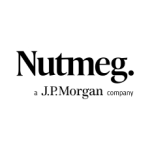Fixed rate Head to Head: National Savings and Investments Growth Bond versus Investec Income Plan
On 11th April, National Savings and Investments (NS&I) launched the Investment Guaranteed Growth Bond (the NS&I Bond), as announced by the Chancellor in the last Budget. Offering a market leading fixed rate, this bond has been eagerly awaited and offers an attractive option for savers. However, whilst savings rates overall continue at their historical lows, it is also understandable why some are choosing to consider moving up the risk spectrum in the hunt for higher fixed returns. With this in mind, here we offer a fixed rate head to head, as we compare the pros and cons of this market leading NS&I fixed rate bond with the market leading fixed rate investment.
Fixed rate bond
Capital protected fixed rate bonds have for some time been a cornerstone of many a saver’s portfolio. Probably the main reason is that they offer a fixed rate of interest, known at outset and which is normally paid for a fixed term, so you know exactly how much you will receive, when and for how long. Provided the bank remains solvent, your capital is also protected and returned to you in full at the end of the fixed term.
Fixed savings rate reality check
Despite the obvious appeal of a fixed return from our capital, the popularity of the fixed rate bond has been diminishing in line with the general trend of falling savings rates. This is particularly pronounced in the last five years, for example in April 2012, you could secure a one year fixed rate paying you 3.50% AER, and a five year offering 4.40% AER fixed. Now the top savings rates over the same terms are in the region of 1.50% and 2.15%, equivalent to falls in interest of 57% and 51% respectively.
These significant drops have not gone un-noticed, perhaps best illustrated by the increased use of the Stocks & Shares ISA over the Cash ISA we have seen in recent years, as interest rates available on the latter have declined substantially and so more savers consider taking on more risk in the hunt for higher returns.
Fixed rate investment
The need for a fixed and regular income is as strong as it is ever has been, however it is also the case that most investments only offer a variable income, and therefore do not offer the predictable income stream that is so important to many who are considering what to do with their capital. But although investments generally offer a variable income, our best selling income investment plan does offer a fixed return, which perhaps helps to explain why the FTSE 100 Enhanced Income Plan from Investec Bank (the Investec Plan) has been so popular.
NS&I versus Investec
The most important difference between these two products is their treatment of your initial capital. Your investment into NS&I’s Bond is fully protected by HM Treasury, and so is returned to you at the end of the term, regardless of any other market factors. Investec’s Plan however, not only relies on the bank’s solvency in order to return your capital at the end of the investment term, but this is also dependent on the performance of the FTSE 100 Index, and so your capital is at risk.
We will now take a closer look at the key features of these two market leading fixed rates:
Fixed term
Both products have a fixed term. The NS&I Bond has a fixed term of three years whilst the Investec Plan is fixed for five years. Fixed terms often appeal to those who wish to plan around this and combined with a fixed rate, offer the peace of mind of knowing exactly what will be paid and for how long.
Fixed rate
The NS&I Bond pays a fixed rate of 2.20% AER, which is significantly higher than the next best three year fixed rate on the market (currently 1.91% with OakNorth Bank) and is more in line with the best longer term fixed rates with a term of five years or more. The latest issue of the Investec Plan offers an annual income of 4.56%, which is more than double that offered by the best capital protected fixed rate option available.
Payment frequency
Another important feature of fixed rate products is how often the interest is paid, and where it can be paid, especially for those looking to supplement their income. Interest on the NS&I Bond is paid annually and can only be added to the bond, whilst interest on the Investec Plan is paid monthly into a bank account of your choice. Monthly income is often cited as the most popular option since it is the most useful in terms of budgeting, and can be attractive when looking to supplement existing income or boost retirement income from your capital.
Interest payments
Interest on both accounts is paid to you gross. Interest from the NS&I Bond and any non-ISA investments into the Investec Plan will be subject to UK tax and will count towards your Personal Savings Allowance. New ISA investments or ISAs transferred into the Investec Plan will not be subject to tax.
Minimum/maximum contributions
Both plans only accept lump sum contributions. The minimum into the NS&I Bond is only £100, but perhaps the biggest limitation to the product is that it is restricted to a maximum balance of £3,000 per person. Investec’s Plan on the other hand has a minimum contribution of £3,000, which may be on the high side for some, but with a maximum investment limit of £1m, should cater for investors looking for a high fixed income.
Early closure
You can withdraw your money from the NS&I Bond before the end of the term but a penalty equal to 90 days’ interest will be deducted on the amount you cash in. The Investec Plan also includes the option to withdraw your money early however the value you receive will be a market value which is based on how long your investment has been running as well as market conditions at the time of cashing in. This could result in you getting back less than you originally invested and so this plan should be considered a fixed term investment, and only taken out if you do not need access to the capital for the next five years and accept the risk to your capital.
ISA option
The NS&I Bond does not accept ISA investments whilst the Investec Plan accepts both new ISAs and ISA transfers. Although the Personal Savings Allowance removes the tax liability on the interest earned for most savers, there are still a significant number of Cash ISA savers with accounts paying little or no interest, and with very poor returns on offer by the current range of fixed rate Cash ISAs. This could therefore be considered a viable option by utilising the ISA transfer, as well as new ISA investments up to the new £20,000 ISA allowance. ISA interest does not count towards the Personal Savings Allowance because it’s already tax-free. Please remember that your capital is at risk with the Investec Plan.
Offer period
The NS&I Bond launched on 11th April 2017 and accounts can be opened for 12 months from launch, with applications being accepted up to 10th April 2018. Investec’s current issue opened on 18th April with a closing date of 5th May for ISA transfers, and 26th May for new ISAs and non-ISA investments. The Investec Plan is now in its 34th issue and since its launch, a new issue has started immediately after the end of the previous issue.
Treatment of capital
Any investment into the NS&I Bond is fully capital protected and so will be returned to you at the end of the three year term. The Investec Plan puts your capital at risk, with your initial investment only being returned provided the FTSE 100 Index does not fall by more than 50% during the term of the plan. So although the plan does contain some protection against a falling stock market, if it does fall by more than 50%, and also finishes the fixed term lower than its value at the start of the plan, your initial investment will be reduced by 1% for every 1% fall, so you could lose some or all of your initial investment.
Credit risk & compensation scheme
Since the repayment of your investment into the NS&I Bond is backed by HM Treasury (as opposed to a normal bank deposit falling within the limits of the FSCS), the account is considered to be 100% secure. Any investment into the Investec Plan is reliant on the bank remaining solvent for the duration of your investment since otherwise you could lose any future returns as well as some or all of your initial capital. This means its credit rating becomes an important consideration and since it is not a deposit, any investment would not be covered by the FSCS for default alone.
Compared to inflation
The current rate of inflation is 2.3%, as measured by the Consumer Price Index. There has been an increasing threat of inflation rising further in the coming months and based on the number of savings accounts which fail to match or beat inflation, this is a genuine concern.
At 2.20% AER, the NS&I Bond fails to match inflation whilst the Investec Plan offers almost double the current rate of inflation. This higher level of income is the upside for putting your capital at risk, however, if the FTSE falls by more than 50%, you could lose some or all of your initial investment.
Fair Investment conclusion
Commenting on these market leading fixed rate options, Oliver Roylance-Smith, head of savings and investments at Fair Investment Company, said:
“Both options pay a fixed rate for a fixed term, regardless of the performance of the stock market, so the investor has the certainty of knowing at the outset exactly how much they will receive, when and for how long. When considering any sort of fixed rate product, it is imperative that the risks of each are fully considered and understood before committing, whether this is inflation risk, risk of capital loss or credit risk. This is in addition to the key features of the product such as the level of income on offer, how frequently it is paid and the minimum/maximum contribution levels.
He continued: “The NS&I Bond clearly offers a stand out rate when compared with other fixed rate bonds in the market of similar duration, so this in itself will make it popular. The main downside is the maximum contribution level of £3,000 so the additional interest earned from the higher rate will be relatively small. With the level of savings rates on offer across all fixed terms, there is a great deal of pressure on savers to consider alternatives and the Investec Plan is our best selling income investment, not least because it pays a fixed income which is unusual for an investment. The monthly payment frequency is also a popular feature, however in return for the high level of fixed income, your capital is at risk.”
The Investec FSTE 100 Enhanced Income Plan is now available for ISAs, ISA transfers and non-ISA investments, with a minimum investment of £3,000. Click here to find out more »
The NS&I Investment Guaranteed Growth Bond is now available to invest in online (non-ISA only), with a minimum investment of £100 and a maximum of £3,000. Click here to find out more »
No news, feature article or comment should be seen as a personal recommendation to invest. Prior to making any decision to invest, you should ensure that you are familiar with the risks associated with a particular investment. Fair Investment Company does not offer advice and any investment transacted through us is on a non-advised basis. If you are at all unsure of the suitability of a particular investment, both in respect of its objectives and its risk profile, you should seek independent financial advice.
The Investec Enhanced Income Plan is a structured investment plan which is not capital protected and is not covered by the Financial Services Compensation Scheme (FSCS) for default alone. There is a risk of losing some or all of your initial investment. There is a risk that the company backing the plan or any company associated with the plan may be unable to repay your initial investment and any returns stated. In addition, you may not get back the full amount of your initial investment if the plan is not held for the full term. The past performance of the FTSE 100 Index is not a guide to their future performance.
Tax treatment depends on your individual circumstances and is based on current law which may be subject to change in the future. Always remember to check whether any charges apply before transferring an ISA.
AER stands for the Annual Equivalent Rate and illustrates what the interest rate would be if interest was paid and compounded once each year.
Tags





